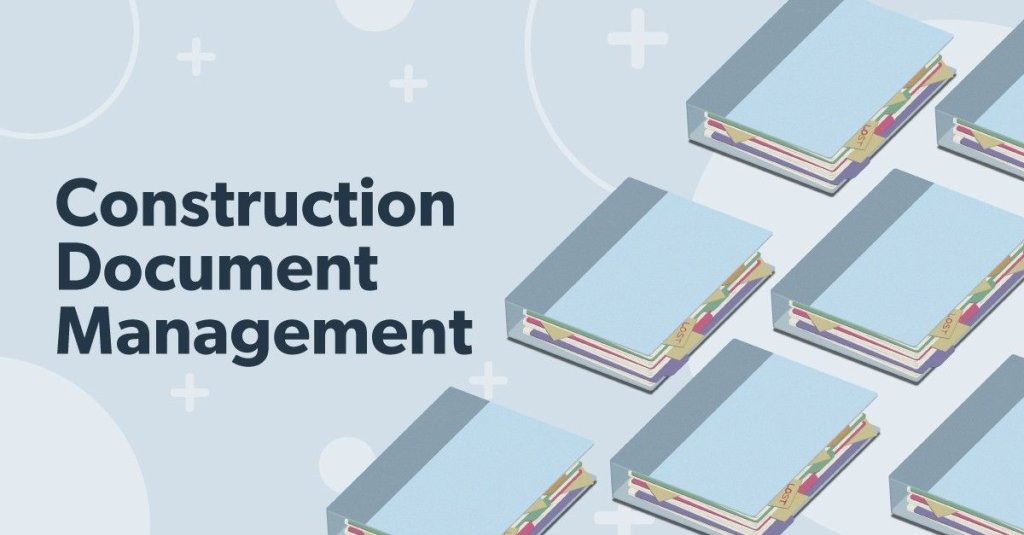Opening Efficiency: The Advantages of Construction Document Management Platforms
Opening Efficiency: The Advantages of Construction Document Management Platforms
Blog Article
Enhancing Operations Efficiency: Engineer's Expert Techniques for Construction File Administration
In the realm of architectural style and building, the careful monitoring of records stands as a cornerstone for project success. These techniques not only make sure smooth job development yet additionally hold the vital to opening improved performance and accuracy in the complex world of building and construction record monitoring.
Trick Record Company Strategies
When taking care of building records, one of the essential methods that designers employ is establishing a efficient and organized company system. This system commonly includes categorizing files based on their kind, such as illustrations, specs, contracts, and permits. By creating distinctive and clear groups, designers can swiftly find specific details when required, saving time and minimizing mistakes in the building process.
Within each category, designers further organize records by making use of or creating subfolders numbering systems to signify alterations or versions (construction document management). This ordered structure ensures that the most present and pertinent details is conveniently accessible while preserving a record of adjustments made throughout the project timeline
Furthermore, engineers typically use electronic record management systems that provide features like keyword search features, variation control, and gain access to limitations to improve organization and cooperation among project stakeholders. These tools enhance the paper access procedure, advertise real-time updates, and facilitate smooth communication, eventually adding to the general success of the building task.
Collaborative System Assimilation
To enhance document administration effectiveness in building tasks, architects flawlessly incorporate collaborative systems to enhance interaction and enhance control among task stakeholders. By leveraging joint systems such as job administration software application, cloud-based storage systems, and interaction devices, designers can produce a centralized center for all project-related records and interaction channels. These systems permit employee to access, testimonial, and work together on files in real-time, reducing hold-ups and the danger of errors connected with conventional document monitoring techniques.
Collaborative platform assimilation also cultivates transparency and responsibility within the task team, as all stakeholders have exposure right into the latest job updates and revisions. By streamlining interaction and document sharing, designers can make sure that all employee are functioning from one of the most up-to-date info, lessening the opportunities of misunderstandings or disputes arising because of out-of-date records.
Furthermore, collaborative platforms allow seamless partnership in between engineers, professionals, clients, and other job stakeholders, advertising a much more natural and reliable task operations. By damaging down interaction barriers and facilitating information exchange, architects can drive efficiency and development in building jobs, eventually causing successful job results.
Version Control Best Practices
Executing effective version control practices is essential for maintaining document accuracy and uniformity in building and construction tasks. By developing a clear system look what i found for handling modifications, project teams can ensure that every person is functioning from the most up-to-date documentation, lowering the threat of errors and discrepancies throughout the building and construction stage.
Among the essential finest practices for variation control is to assign unique identifiers per paper version. This can be achieved by making use of a numbering system or day stamp that clearly shows the order of modifications. By clearly classifying each version, employee can quickly track the progression of the paper and identify one of the most recent variation.

Automation Devices for Effectiveness

Document control useful site software, like Procore or PlanGrid, systematizes project paperwork, making it quickly accessible to all stakeholders. These platforms enable real-time collaboration, variation control, and automated back-ups, safeguarding versus data loss. Additionally, Building Info Modeling (BIM) software automates the generation of building drawings and guarantees that changes are integrated throughout all related records.
Incorporating automation devices with cloud storage solutions even more boosts access and protection. By automating the document management procedure, task groups can concentrate their effort and time on value-adding tasks, eventually enhancing efficiency and project outcomes.
Secure Information Monitoring Solutions
Efficiently securing and handling job information is extremely important in the construction sector to ensure discretion and integrity throughout the job lifecycle. Building firms can make use of encrypted cloud storage services to firmly store and share task files with accredited employees.
Additionally, using electronic rights administration (DRM) devices adds an additional layer of protection by avoiding the unapproved circulation or replication of job papers. Normal data backups are necessary to reduce the danger of information loss as a site here result of unexpected scenarios like equipment failings or cyber-attacks. Collaborative platforms with built-in safety attributes make it possible for smooth communication and file sharing among job staff member while keeping information honesty.
Conclusion
In conclusion, executing crucial record company strategies, incorporating collective systems, exercising variation control ideal practices, utilizing automation devices, and embracing secure data monitoring solutions are necessary strategies for improving operations effectiveness in construction paper administration. These skilled techniques can improve processes, improve interaction, make certain precision, and keep data protection throughout the building and construction task lifecycle.
In the realm of architectural design and building and construction, the careful administration of files stands as a cornerstone for project success. These approaches not just make certain smooth job progression but additionally hold the crucial to unlocking enhanced performance and precision in the intricate world of building document monitoring.
To enhance document monitoring efficiency in building and construction jobs, architects flawlessly integrate collaborative systems to enhance interaction and streamline control among task stakeholders. These platforms permit team participants to accessibility, evaluation, and collaborate on papers in real-time, decreasing hold-ups and the risk of mistakes associated with standard document administration methods.
Using automation devices in building record administration substantially boosts efficiency and enhances processes for job groups. construction document management.
Report this page